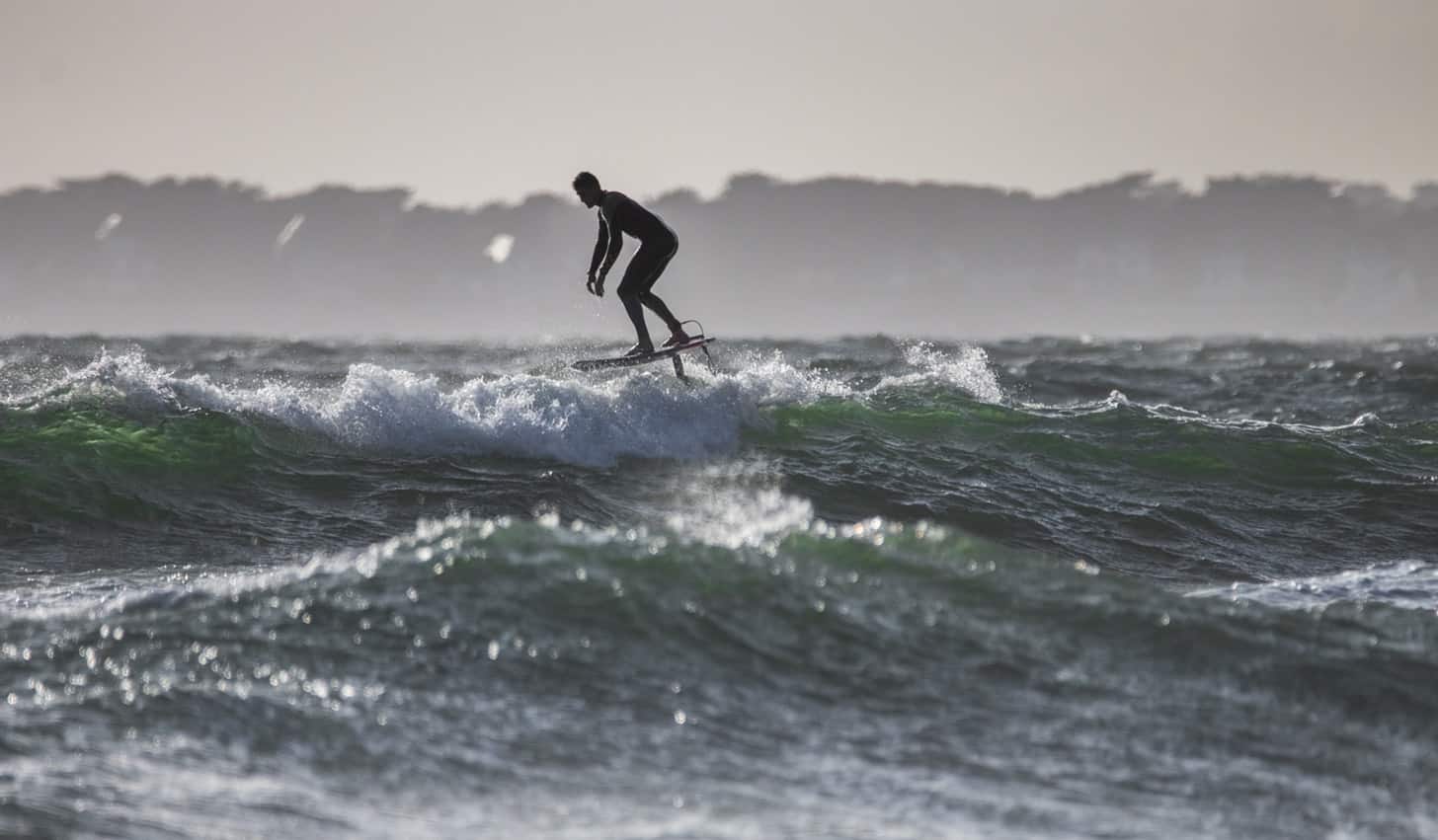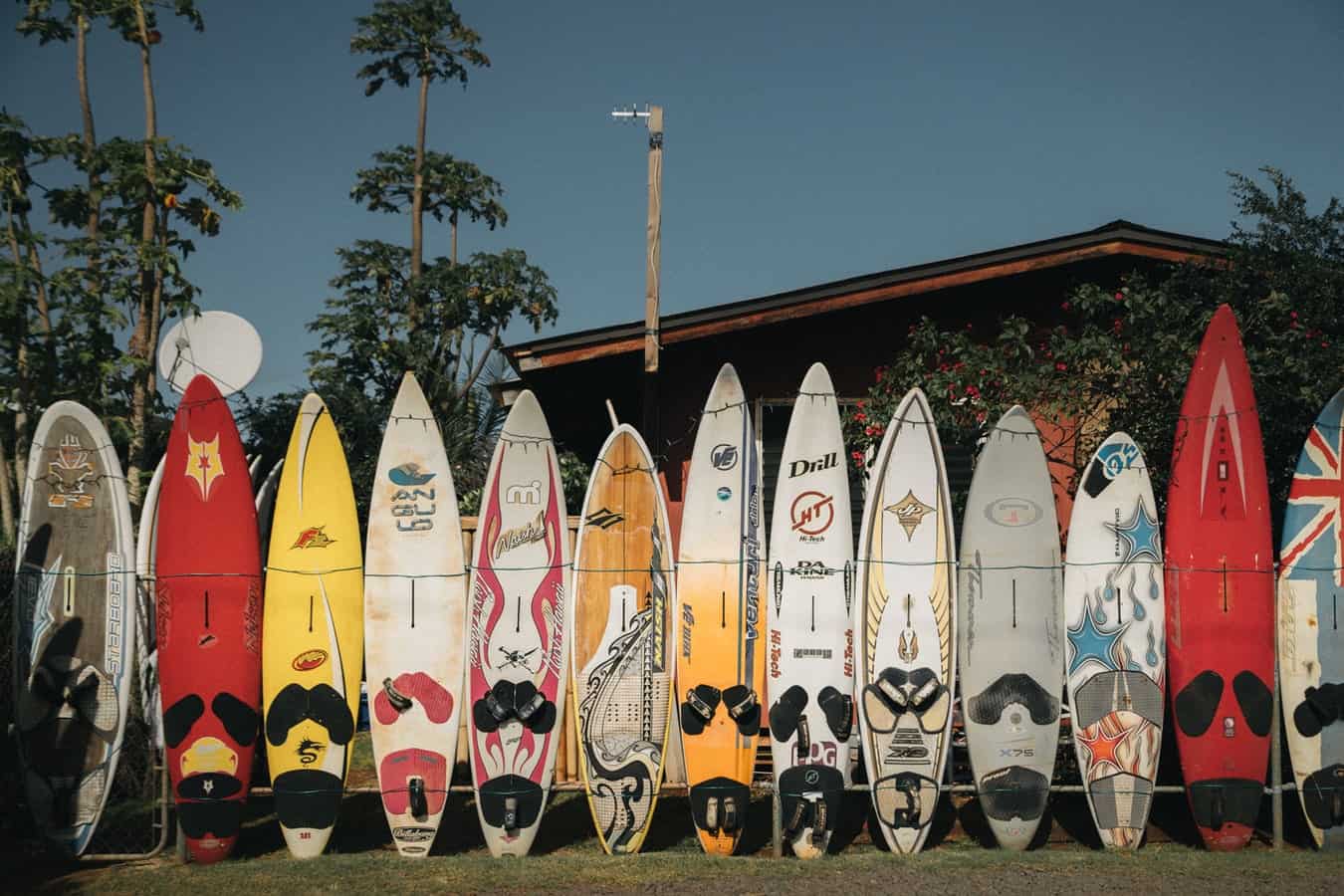Nothing can beat the joy that surfing brings to your mind when you are gliding through crystal waters in the open ocean. The thrill that it causes me and millions of other people around the world is like no other. Yet like any sport, there are many dangers that can cause some harm. People always ask me, “Is Surfing A Scary Sport To Learn?”. As a surfer myself I have no fear when it comes to surfing and being in the water, but I decided to do some research of my own and see what I could find.
Is Surfing A Scary Sport To Learn? Surfing is not any more dangerous than any other sport or activity. There are different factors that vary from sport to sport, but the risk is not that different. Knowing how to carry yourself and find a solution to dangerous situations is a great skill to have when on the water.
While there are many dangers to the sport of surf, most of them can be avoided by not making careless decisions and putting yourself in harm’s way. Also, being fully aware of your surroundings and paying attention to changing patterns in your environment could help you in a dangerous situation. In light of this, there are still many things you must know to help keep yourself safe while surfing.
What Is So Scary About Surfing?
Many people wonder and worry about whether or not surfing is a scary sport. Most people think of huge waves crashing down and landing on them when in reality, not all waves are like that. Surfing is considered a safer sport than most because of most sports, but there are still some ways you may get injured.
When you are surfing, you are going to be scared. When you surpass one challenge, there is a bigger, scarier one waiting for you. But being scared and being panicked are two different things. Fear is normal. Panic is deadly.
Many people are afraid of drowning while surfing, which is a reasonable fear to have. One thing that you have to keep in mind is panicking is one of the biggest causes of drowning. When you wipe out, panicking and struggling underwater actually shorten the time that you are able to hold your breath which can cause you to drown.

Some of the minor injuries you can get while surfing is:
Cuts and Bruises
You can get these from scrapping against a rock or being cut by your fin. These types of injuries and one of the most common because of the number of times you fall down.
Head Injury
If you wipe out on a wave, it is possible for your head to slam against the reef or rock. Some surfers take the extra safety precaution and wear helmets to try and protect themselves from these types of injury. Some of the most common head injuries are concussions.
Muscle Pull
Many people that have existing back or shoulder problems can pull their muscles because of the constant standing and continuous paddling. Resting your back and shoulder should give it enough time to heal and rejuvenate.
Cramps
Let me tell you, I can’t even count how many times I have gotten a cramp while surfing. This is a result of not being warmed up before you go surfing and also dehydration. Make sure to drink lots of water to try to avoid cramps.
Sea Creatures
You are surfing in the home of many sea creatures. Some may not like that you are there and bite or sting you. Jelly Fish stings and one of the most common types. Also, stingray and shark attacks are possible.
While serious injury is a possibility, if you are just learning how to surf and you are by the shore you should not have to worry about much of those. As you become more experienced thought and start to move farther out, get to know how you can protect yourselves from more serious injuries and how to try to avoid getting into those types of situations.
Should I Be Scared of Sharks During Surfing?
Movies and TV shows portray sharks to be these savage creatures that will eat you alive when actually, they are quite majestic creatures. The Discovery Channel and Hollywood loves making stories that sell and portraying sharks as monsters are what people pay to watch.
Sharks do pose a threat to surfers, but so do many other things in the world like cars, guns, and airplanes. Don’t let this fear stop you from having fun at the beach and spending time surfing.
Most of the time they may have just mistaken you for food. When a surfer is laying down on a board, the sharks can only see your silhouette. From below you look like a turtle or a seal, which is one of the big reasons why they attack.
The average number of shark attacks in the United States are only 16 per year, and only one fatality every 2 years. There are approximately 2.5 million surfers in the U.S which means the number of shark attacks a year a really low.
I am not saying that you will never get attacked by a shark, it just a really slip chance that you will.
Do Injuries Vary Between Beginners and Experienced Surfers?
Usually, beginners tend to start off in the inside of the break catching the whitewash while the more experienced surfers surf out in the blue water.
While both beginners and the experienced surfer can be injured, the more experienced surfer has a greater chance of getting more hurt because they are taking on bigger waves and doing harder tricks. Beginners surfing in the “whitewash” may have minor scratches, but usually, they will endure minor to no injuries because it is a less powerful wave.
More experienced surfers are more prone to take more chances and take more risks which makes them have a higher chance of getting hurt. Surfing bigger waves could be fun, but they also hold bigger consequences. Not taking outrageous risks can lower your chances of harm.
Why Ignorance Can Be Dangerous
Ignorance is one of the biggest things that could get you seriously injured or even worse, killed.
One thing that my mom always says is, “if you are new to a surf spot, don’t just go rushing in. Take 10 minutes to look at the break and how the currents are moving”. This is very important because you are not familiar with the break and there could be rocks, currents or reefs that you may not have seen.
Also, if you are new to surfing, don’t just get into the line-up and get in the way of everyone else. Get surfing lessons and learn the basics of surfing etiquette so that you can keep yourself and the people around you safe.
In addition to that, it is also a good idea to ask some of the locals about the break and if there is anything they would recommend staying away from. Being that they live and surf there on a regular basis, it can help you to find out some insight that you may not have known.
Sometimes, its not even the waves and the surf that can put you in a dangerous situation. Sometimes it is the fact that you were being too naive to the situation.
Related Questions:
Is it possible to get seasick while surfing?
Yes, it is very possible for you to be seasick while surfing because of the constant rocking motion of the waves. If you still want to take a surfing lesson, a simple seasickness pill or a non-drowsy pill could help solve the problem.
Can you die while surfing?
While there is no exact number of people that have died while surfing, the estimated amount is around 10 people per year. Now before you start freaking out, there are a total of 23 million surfers which means that that number is surprisingly low. That means that there is a very slim chance that you will die while surfing, but always be careful and be alert while on the water.
Can I learn how to surf even if I have never surfed before?
Yes! There are no rules saying who can and can’t learn to surf. If you have determination and time to learn, then there is nothing stopping you from learning. Some of the easiest ways is to get a surf teacher and take surfing lessons.
As a beginner, what waves are too big for me?
When beginning to learn how to surf it is best if you stay on the inside and surf the “whitewash”. As you become more accustomed to surfing and gain more experience, you will be able to move outside to the bigger waves. For beginners, a 1-2 feet wave would be perfect. As you gain experience and as you get better that number will slowly grow.

